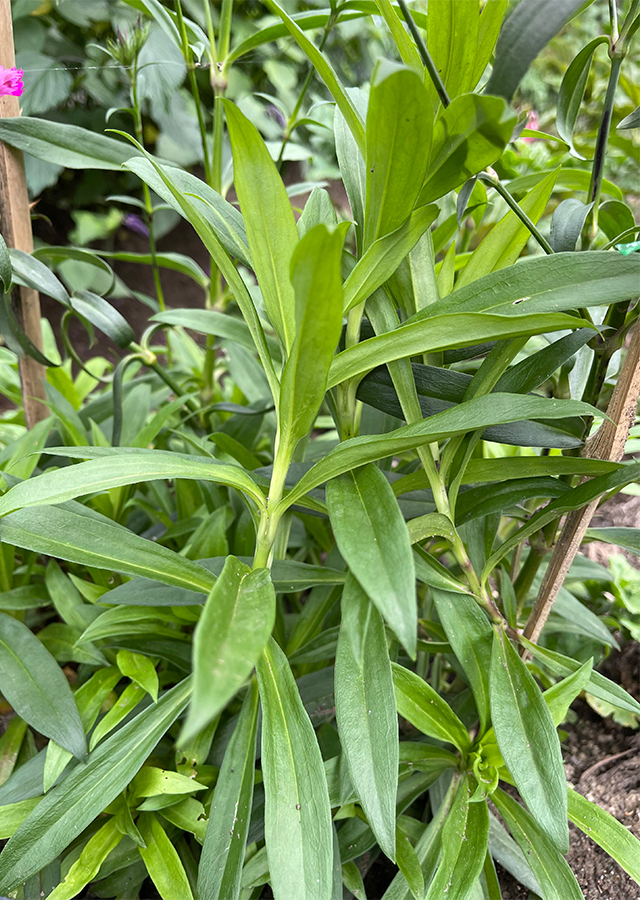Traditional Herbs from Dianthus chinensis
stimulate_the_digestive_system
- Take all parts of the fresh Chinese pink plant as needed, wash thoroughly.
- Boil until boiling.
- Let it warm/cool.
- Strain then drink as a tonic to stimulate the\u00a0digestive_system." ],"constipation
- Take enough fresh Chinese pink leaves, wash them thoroughly.
- Boil until boiling.
- Let it warm/cold.
- Strain and drink to treat constipation.
What is Dianthus chinensis Looks like??



Parts of Dianthus chinensis that could be used
- Leaves
- All Parts of the Plant
Dianthus chinensis Distribution
Dianthus chinensis is native to Gansu, Hebei, Heilongjiang, Henan, Jilin, Liaoning, Nei Mongol, Ningxia, Qinghai, Shaanxi, Shandong, Shanxi, and Xinjiang and is naturalized in South China, Kazakhstan, Korea, Mongolia, Russia, Siberia, Europe. This plant has beautiful and attractive flowers so it is often planted as an ornamental plant in pots. This plant has also been used for more than 2,000 years in Chinese herbal medicine because it has anthelmintic, antibacterial, antiphlogistic, diaphoretic, diuretic, emmenagogue, fever-reducing and hemostatic activities.
Agroecology of Dianthus chinensis
Dianthus chinensis prefers fertile, well-drained neutral loam to alkaline soil in a sunny position, but does well in most soils including dry ones.
Morphology of Dianthus chinensis
- Caespitose stem loose, erect, distally branched.
- Leaves linear-lanceolate, 3-5 cm \u00d7 2-4 mm, central vein prominent, base slightly narrowed, margin flat or denticulate, apex tapering.
- Flowers solitary or several on cymes; pedicle 1-3 cm,\u00a0bracts 4, ovate, measuring 1/2 as long as calyx, margin webbed, ciliated, apex long pointed. Petals cylindrical, 1.5-2.5 cm \u00d7 0.4-5 mm, striated; teeth lanceolate, size 5 mm, edge ciliated, apex sharply pointed cm; limbs bright red, purple-red, pink, or white, ovate-triangular, 1.3-1.5 cm, throat spotted and bearded loosely, apex Irregularly toothed. Stamens are secreted,\u00a0anthers are blue. Ovary is suboblong. Linear style.
- Fruit is cylindrical capsule, surrounded by petals, apex is 4-toothed.
- Seeds are black, round and flat.
Cultivation of Dianthus chinensis
Propagation uses seeds (generative) and shoot cuttings as well as division/division of clumps (vegetative). The seeds usually germinate in 2 - 3 weeks. When they are large enough, plant the seedlings into individual pots. Seeds can also be sown thinly in an outdoor seedbed. Shoot cuttings use half-ripe stems. Division - Larger clumps can be replanted directly into their permanent positions, although it is best to plant smaller clumps and grow them in a cool room until they are well rooted.
Dianthus chinensis, more details :
Chemical Content of Dianthus chinensis
Cyclopentapeptide dianthin I, pseudostellarin A, heterophyllin J, saponins (dianchinensoide A and dianchinensoide B).
Benefits of Dianthus chinensis
The whole plant is a bitter tonic herb that stimulates the digestive, urinary and intestinal systems, used internally in the treatment of acute urinary tract infections (especially cystitis), urinary tract stones, constipation and menstrual failure, to treat inflammation and swelling of the skin, clearing vision.
Simplisia of Dianthus chinensis
Another Facts for Dianthus chinensis :
Synonym of Dianthus chinensis
Dianthus altaicus Willd. ex Ledeb, Dianthus amurensis Jacques, Dianthus chinensis f. albiflora Y.N.Lee
Habitus of Dianthus chinensis
Herb. Annual herb, 30-50 cm high
Habitat of Dianthus chinensis
- Riverside", "Forest", "Mountains", "Grasslands



No comments:
Post a Comment